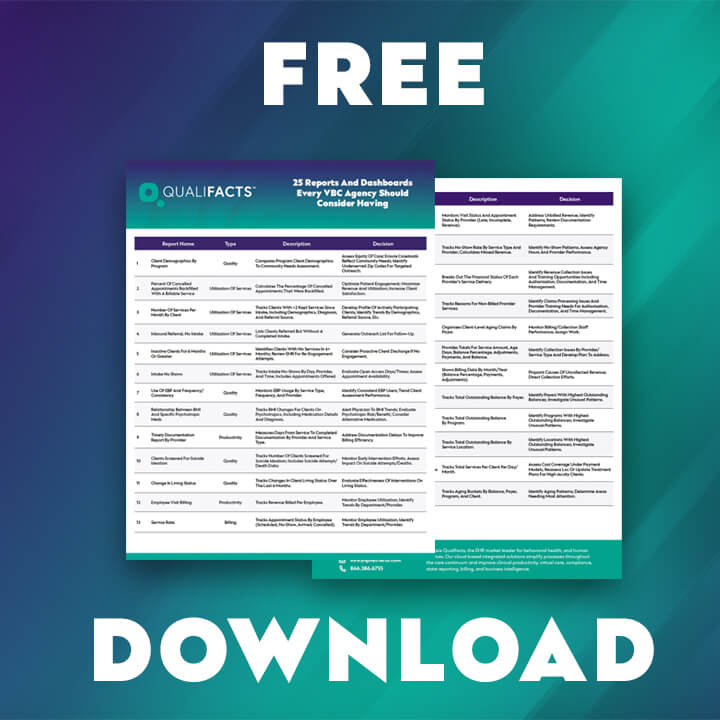If you are interested in leading your agency through becoming a Certified Community Behavioral Health Clinic (CCBHC), the SAMHSA Certified Community Behavioral Health Clinic Planning, Development, and Implementation Grant (CCBHC-PDI Grant), is a funding opportunity you should consider. While the application process is rigorous, the benefits of becoming a CCBHC to the people you serve, your community, and your agency are unparalleled.
The CCBHC-PDI Grant application process is comprehensive and can feel daunting, but these tips should help you along the way:
Tip 1: Understand SAMHSA’s Updated CCBHC-PDI Grant Application Criteria
In March of 2023, SAMHSA released the updated Community Behavioral Health Clinics Certification Criteria. Thoroughly read the criteria before starting the application process. You need a clear understanding of the organizational commitment required. Highlight text, write notes in the margins, jot down questions; whatever you need to do to align your team so you can submit the strongest possible application.
Tip 2: Assemble a Multidisciplinary Team
The team you assemble will support you through the award process if you become a SAMHSA CCBHC-PDI Grant recipient. This strategic assembly of diverse skills and roles ensures a comprehensive approach to meeting CCBHC requirements and achieving grant success.
Individuals can occupy more than one of the recommended positions, but each of the roles needs to be owned by someone.
Tip 3: Identify and Designate Your CCBHC Project Director
The CCBHC Project Director should be identified immediately. Designating this role at the outset is crucial for the streamlined execution of your CCBHC-PDI grant application process.
- If you can’t fill this role immediately, designate an intermediary director so all the required tasks to complete the proposal are coordinated and tracked against a formal project plan.
- Delegate tasks in the project plan to responsible persons with target due dates.
- Indicate status updates for tasks to ensure that you meet the application submission deadline.
- The project plan you build for your application process will also guide the team through its execution of the plan you committed to in your proposal. It will be your central source of truth.
Tip 4: Identifying your Evidence-Based Practices
SAMHSA’s Evidence-Based Practice Resource Center and SAMHSA’s National Network to Eliminate Disparities in BH (NNED) resources can help you select evidence-informed and culturally appropriate treatment practices for your CCBHC. You will need to demonstrate that these practices have been effective by connecting your EBPs to specific populations. Be prepared to shift EBPs if the evidence of success is not there.
Tip 5: Identify Designating Collaborating Organizations (DCOs) Early
Determine early whether you will provide all the required CCBHC services or if you will partner with DCOs. There are pros and cons to both approaches:
Pros: Established practices and providers can offer services and a level of experience that your agency currently does not have.
Cons: DCO services oversight responsibilities are challenging and can become a pain point. Robust interoperability and communication (exchange of data) between the CCBHC and DCO are essential for success.
If you decide to leverage DCOs, start with agencies you already have a relationship with. Whether you use new or established partnerships, your CCBHC/DCO relationship should be formalized with a written “memo of understanding” (MOU) that documents information sharing and interoperability expectations.
Tip 6: Assess your Technology Needs
Now is the right time to evaluate your current technology portfolio against the CCBHC criteria, including your EHR. A few examples of the technology capabilities you will want to ask your EHR vendor about are:
- How strong are the reporting and analytics tools of your current EHR?
- Can you easily pull clinical quality outcomes data and operational outcomes data?
- How flexible are clinical workflows?
- How strong are your interoperability capabilities? Can your EHR be integrated to exchange data with the local HIE?
- Does your EHR include integrated telehealth capabilities?
Consider including the purchase of new technology in your CCBHC-PDI Grant application under the rule that says:
“25% of the total award allowable in each year 1 and 2 and no more than 20 percent of the total award for budget period in each of year 3 and year 4 can be used for infrastructure.”
Tip 7: Document Current Clinical Workflows – Assess Gaps and Next Steps
Becoming a CCBHC requires your front-line staff to capture new outcomes data. Greater accessibility may necessitate a change in workflows as well. If your current processes are documented accurately, it will be easier for you to re-engineer them to meet the CCBHC criteria. Knowing how services are currently delivered from the front desk to the point of discharge will help establish which workflows need to change.
This can be an informal process with a bulleted step-by-step list or a simple diagram. Workflow documentation with feedback from your team will help you decide what should be kept, changed or augmented.
Tip 8: Submitting Your Budget
Review the list of common errors in Appendix B in the NOFO for the SAMHSA CCBHC-PDI grant application. This information is invaluable in establishing your CCBHC budget. SAMHSA also recommends you use the Budget Template referred to in Appendix L and found on the SAMHSA Forms and Resources webpage.
Tip 9: The Disparity Impact Statement (DIS)
The “Disparity Impact Statement” is an important tool for your CCBHC. It will determine your outreach efforts, staffing, training, and service delivery. The success of your CCBHC depends on understanding the demographics of your community, ensuring fair representation, and providing equal access to CCBHC services.
Utilize SAMHSA’s Disparity Impact Statement worksheet to prepare your DIS. You will be utilizing this document throughout the life of your CCBHC, so be considerate when creating it, and make sure that it is both comprehensive and actionable.
Tip 10: Continuous Quality Improvement
As a CCBHC, your organization is moving toward becoming an entity of Continuous Quality Improvement (CQI). Consider adopting the Plan, Do, Study, Act Process.
You will need a formal CQI plan that you will maintain throughout the life of the CCBHC. Start with workflows and training when reporting on your Clinical Quality Outcomes. Once this data is in place, you will need to generate reports within your EHR verifying your quality outcomes performance.
Conclusion
Qualifacts is available to discuss the CCBHC-PDI Grant application, provide assistance as you build out your application, provide spreadsheet templates for project plans, and much more.
Contact Qualifacts CCBHC Program Manager, Mary Givens, for assistance using the form below



